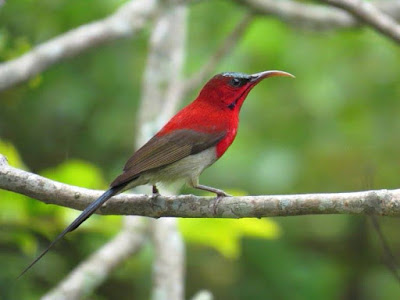Ranikhet is a perfect weekend gateway from Delhi(350km).it
is nestled in Almora district of Uttrakhand situated at the elevation of 1,869
meters above the sea level, it offers stunning views of western peaks of
Himalayas. It is enveloped with pine trees and lush green forest with rich
flora and fauna. Whenever you go to Ranikhet, do not forget to indulge in
nature walks, which will help you in appreciate the beauty of
Ranikhet in the
best possible way.
Ranikhet is the Hindi meaning for “Queen’s Meadow.” History
has it that, a queen, Rani Padmini fell in love with this wonderful place and
the King, Raja Sudhardev had to compel to her and built her a palace here. The
queen decided to make it her residence, and that is how ‘Ranikhet’ got its name. Though no clue of the palace is
found in present times, the beautiful green lands against the backdrop of
Himalayas, whereas it genuinely justifies the mythology associated with the
place.
Ranikhet has a different environment in every season, its a
perfect destination for nature lovers and for people who want to get out of
there busy schedule.
How to Get There
Because of its location, it cannot be reached directly by
railways and flights. The nearest railway station(Kathgodam) and airport
(Pantnagar)is 89km and 119 km away respectively. However, this hill station has
excellent connectivity by road. Hence, a road trip with family and friends from
places like Delhi, from where it is 350 kilometers, would be a great way to
reach Ranikhet. The spectacular drive throughout is sure to leave you
speechless.
Accommodation
There are numbers of hotels, homestays and other
accommodation facilities in Ranikhet but if you are looking for a beautiful,
comfortable and pocket-friendly accommodation.
Snow View Hotel in Ranikhet is a
lovely weekend getaway, as well as a recommended stay for travelers who are on
their way to discover the Kumaon Himalayas.it gives you a stunning view of
Himalayas and to book Uttarakhand tour package and hotels in Ranikhet
Perfect time to visit Ranikhet
As you would presume of a common hill station, Ranikhet
encounters a lot of rainfall and generally has a cold climate all year long .
which makes it a magnificent place to tour throughout the year. However, unless
you love snow, to avoid hassles and problems due to the heavy snowfall, the
best time to visit Ranikhet is from March to October. The summers are mild,
with a max. of 25 degrees. This makes it an excellent getaway during this time,
especially for people living in the hotter parts of India.
Places to visit in Ranikhet
Kalika Golf Links
– golf course with nine holes is located
just outside the main town, and it is managed personally by the Indian Army. It
welcomes professional as well as recreational purposes people, which makes it
an excellent place to have some fun.
The Kalika Temple,
housing the idol of Goddess Kali, is also found very close to the Golf course.
Jhula Devi Temple – Whether you are fond of rich history, or
looking for spiritual blessings, this temple is the best place for you. This
temple is dedicated to Goddess Durga, who as history says, shielded the
villagers from the critical wildlife in times of need. People from all over
India gather to this place to make a wish to goddess Durga, and whenever it is
fulfilled, they come back to tie a bell to the temple as a thanksgiving. These
bells are the part of this temple, and it is well-known for this too.
Bhalu Dam –This place situated at a distance of 3 km from
Chaubatia. It has a small human-made lake which is the water storage for the
Bhalu Dam built on the Kosi River. This supplies water to Ranikhet and nearby
areas. It is a very picturesque location that leaves an enduring impression on
tourist.
Chaubatia Gardens – Located at a distance of 10 km from the
town, these gardens have an ample plantation of apricots, peaches, and
chestnuts. However, they are mainly known for the apple orchids and the
fantastic scenic view that they offer of the snowcapped hills of the Himalayan
range.
Majkhali- is a small
place located Ranikhet on Almora road one can quickly get there by hiring a
taxi or a car from Ranikhet. It offers a magnificent view of snowy mountains
with the natural biosphere.It also has a forest nursery which consists of
different varieties of flora and fauna.there is also a beautiful school named
Birla girls school which is situated at Majkhali.
Ashiyana park
If you’re looking for some fun things to do in Ranikhet,
then the forest themed Ashiyana Park is the heart of the town it is a great
place to spend some time. There are lots of entertainment for kids also they
can enjoy the swings, walk through the herbal gardens and marvel of the
colorful fountains, it is also an excellent place for mesmerizing views of the
Himalayan peaks. It is also known as Deodhar Udhyan for its green forested
area, its first theme park of city and perfect place for some fun family time.
Timings: 7 AM to 7 PM
Entry Fee: INR10/person
Things to do:-
Ø Go for a refreshing
walk into the orchards at Chaubatia Gardens.
Ø Seek divine
blessings at Haidakhan Babaji Temple.
Ø Boating.
Ø Trekking through
unknown and strange paths.
Ø walking in the
woods.
Ø Sightseeing.
For more details log on to:-








































